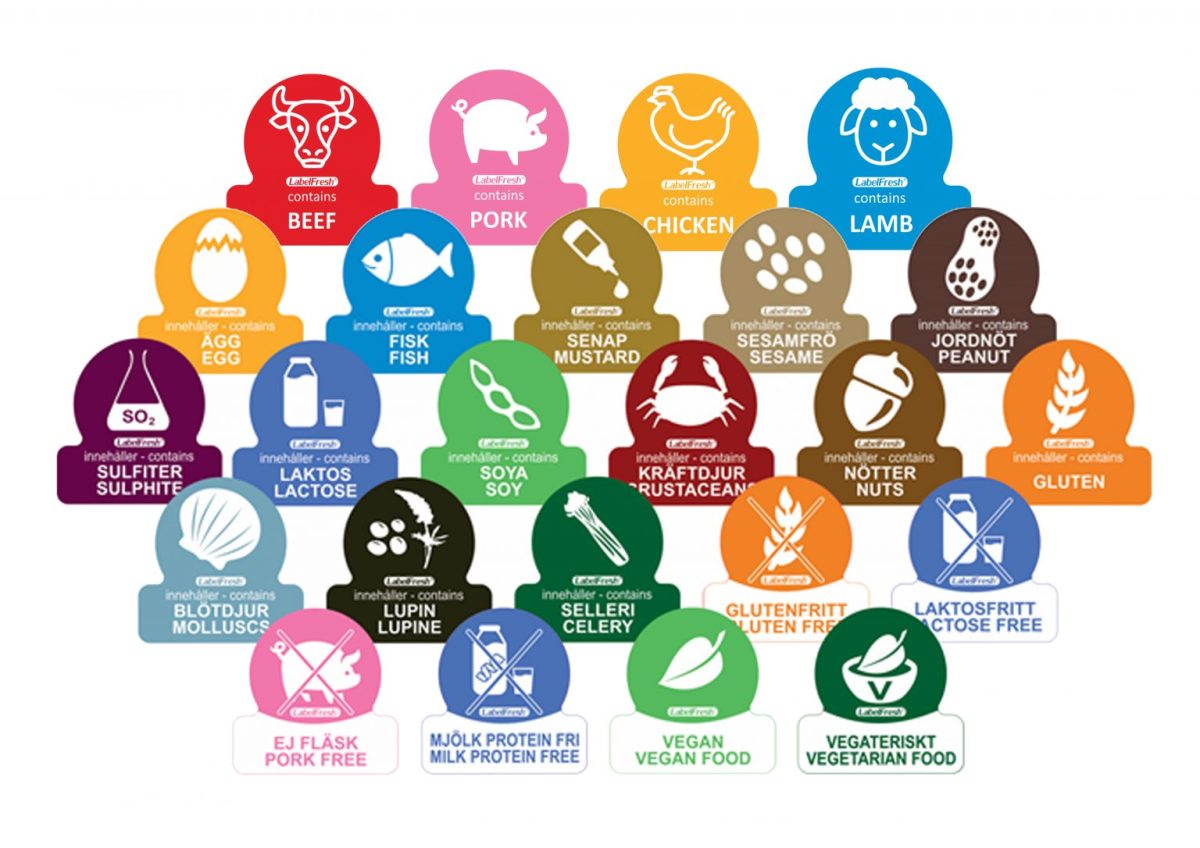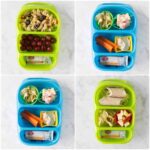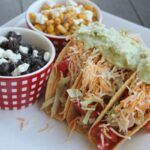Navigating a world of dietary restrictions can feel like a culinary tightrope walk, but it doesn’t have to be a daunting challenge. This guide, “Meal Planning 101: Allergen-Free Recipes for Every Day,” provides a roadmap to confidently create delicious and safe meals, free from common allergens like dairy, nuts, soy, and gluten. We’ll explore simple strategies for meal planning, ingredient substitutions, and recipe adaptation, empowering you to enjoy a diverse and flavorful diet tailored to your specific needs.
From understanding allergen identification and cross-contamination prevention to mastering allergen-free cooking techniques and developing your own creative recipes, this resource offers a comprehensive approach. Learn to confidently navigate grocery shopping, minimize food waste, and transform everyday meals into allergen-free culinary masterpieces. Discover the joy of cooking and eating without compromise.
Understanding Allergens & Dietary Restrictions
Navigating the world of allergen-free cooking requires a thorough understanding of common allergens, their potential effects, and suitable alternatives. This knowledge is crucial for ensuring the safety and well-being of individuals with allergies and those following specific dietary restrictions. Careful planning and preparation are key to creating delicious and safe meals for everyone.
Allergens are substances that can trigger an allergic reaction in susceptible individuals. These reactions can range from mild discomfort to life-threatening anaphylaxis. Dietary restrictions, on the other hand, are often chosen for health, ethical, or religious reasons, and may involve eliminating or limiting certain food groups.
Common Allergens, Symptoms, and Substitutes
The following table details some of the most common food allergens, their typical symptoms, and potential substitutes. It’s important to note that reactions can vary widely in severity, and individuals should always consult with a healthcare professional or registered dietitian for personalized advice.
| Allergen | Symptoms | Potential Substitutes | Important Considerations |
|---|---|---|---|
| Dairy | Rashes, hives, vomiting, diarrhea, difficulty breathing | Almond milk, soy milk, oat milk, coconut milk, rice milk | Check labels carefully for hidden dairy ingredients. Some substitutes may not be suitable for all baking applications. |
| Nuts (peanuts, tree nuts) | Itching, swelling, difficulty breathing, anaphylaxis | Sunflower seeds, pumpkin seeds, tahini (sesame seed paste) – *always check for cross-contamination* | Nut-free facilities are crucial to avoid cross-contamination. Careful ingredient reading is paramount. |
| Soy | Rashes, hives, digestive upset, breathing difficulties | Pea protein, sunflower seed butter, tofu (if not a concern) | Soy is often a hidden ingredient; carefully check labels. |
| Gluten (wheat, barley, rye) | Bloating, abdominal pain, diarrhea, fatigue | Rice flour, almond flour, oat flour (certified gluten-free), quinoa flour | Always look for certified gluten-free labels to ensure there’s no cross-contamination during processing. |
Resources for Various Dietary Restrictions
Numerous resources exist to support individuals with diverse dietary needs. These resources provide valuable information, recipes, and support communities.
- Vegan Society: Offers comprehensive information and resources for vegan living, including recipes and product guides.
- Vegetarian Resource Group: Provides information and support for vegetarians of all types, with a focus on nutrition and ethical considerations.
- Paleo Leap: A resource for individuals following the Paleo diet, with recipes, meal plans, and community forums.
- National Institutes of Health (NIH): Provides evidence-based information on various dietary restrictions and related health conditions.
Accurate Ingredient Labeling and Cross-Contamination Prevention
Accurate ingredient labeling is paramount in allergen-free cooking. Manufacturers must clearly list all ingredients, including potential allergens. This allows individuals with allergies to make informed choices and avoid potentially dangerous foods. Cross-contamination, the transfer of allergens from one food to another, is a significant concern. It can occur during food preparation, storage, or serving. Strict hygiene practices, such as using separate cutting boards and utensils for allergen-free foods, are essential to prevent cross-contamination.
For example, imagine preparing a meal with nuts and then using the same knife to cut vegetables without cleaning it. The residual nut particles can contaminate the vegetables, posing a risk to individuals with nut allergies. To avoid this, designate specific utensils and surfaces for allergen-free preparations, and thoroughly clean and sanitize all surfaces between uses. This meticulous attention to detail ensures the safety and enjoyment of allergen-free meals for everyone.
Basic Meal Planning Strategies for Allergen-Free Diets

Navigating an allergen-free diet can feel daunting, but with a strategic approach to meal planning, it becomes manageable and even enjoyable. This section will equip you with the tools and techniques to create delicious and safe meals every day of the week, minimizing stress and maximizing flavor. We’ll explore practical strategies for planning, shopping, and adapting recipes to suit your specific needs.
Effective meal planning is the cornerstone of a successful allergen-free diet. It allows you to take control of what you eat, ensuring you have delicious and safe options readily available. This reduces the likelihood of relying on last-minute, potentially risky choices. Furthermore, it helps minimize food waste and saves you money by preventing impulse purchases.
Sample Weekly Allergen-Free Meal Plan
This sample plan provides a variety of options, focusing on common allergens such as gluten, dairy, soy, and nuts. Remember to adjust this plan to your specific needs and preferences, always checking ingredient labels carefully.
It’s important to note that this is a sample plan and may need adjustments based on individual dietary needs and preferences. Always carefully read food labels to confirm the absence of allergens.
| Day | Breakfast | Lunch | Dinner |
|---|---|---|---|
| Monday | Coconut Yogurt with Berries and Seeds | Quinoa Salad with Roasted Vegetables | Chicken Stir-fry with Rice Noodles (tamari instead of soy sauce) |
| Tuesday | Oatmeal (certified gluten-free) with Banana and Maple Syrup | Leftover Chicken Stir-fry | Salmon with Roasted Asparagus and Sweet Potato |
| Wednesday | Scrambled Eggs with Spinach and Tomato | Large Salad with Grilled Chicken or chickpeas | Lentil Soup with Gluten-Free Bread |
| Thursday | Smoothie with Coconut Milk, Spinach, and Mango | Leftover Lentil Soup | Shepherd’s Pie with Sweet Potato Topping (using dairy-free milk and butter) |
| Friday | Gluten-Free Pancakes with Fruit | Tuna Salad (made with mayonnaise free of dairy and soy) in lettuce wraps | Homemade Pizza on a Gluten-Free Crust with Dairy-Free Cheese |
| Saturday | Breakfast Burritos with scrambled eggs, black beans, and salsa (using corn or gluten-free tortillas) | Leftover Pizza | Roast Chicken with Roasted Root Vegetables |
| Sunday | Rice Pudding (made with coconut milk) | Salad with grilled chicken or tofu | Leftover Roast Chicken |
Efficient Grocery Shopping and Minimizing Food Waste
Planning your meals before grocery shopping is crucial for both efficiency and reducing waste. Create a comprehensive shopping list based on your weekly meal plan. This minimizes impulse buys and ensures you have all the necessary ingredients. Consider grouping similar items together on your list to streamline your shopping trip.
To minimize food waste, utilize leftovers creatively. Leftover roasted chicken can become chicken salad, soup, or added to other dishes. Consider freezing portions of meals for future use. Proper storage is key; use airtight containers and label with dates to ensure freshness and prevent spoilage.
Adapting Existing Recipes to Be Allergen-Free
Many recipes can be adapted to be allergen-free with smart substitutions. For example, gluten-free flour blends can replace all-purpose flour in baked goods. Dairy-free milk alternatives (almond, coconut, oat) can be used in sauces and desserts. Soy sauce can often be replaced with tamari (wheat-free soy sauce) or coconut aminos. Nuts can be substituted with seeds (sunflower, pumpkin, flax) or other allergen-free options depending on the recipe.
When substituting ingredients, it’s crucial to consider the impact on texture and flavor. Sometimes, minor adjustments to cooking times or other ingredients might be necessary to achieve the desired result. Experimentation and careful reading of recipes are key to successful allergen-free adaptations.
Always double-check ingredient labels to ensure products are free from your specific allergens. When in doubt, choose certified allergen-free options.
Advanced Techniques & Troubleshooting
Mastering allergen-free cooking requires navigating unique challenges. This section delves into common pitfalls and offers practical solutions to ensure your allergen-free meals are not only safe but also delicious and visually stunning. We’ll explore advanced techniques and strategies to elevate your culinary skills while maintaining the integrity of your dietary restrictions.
Common Challenges and Solutions in Allergen-Free Cooking
Allergen-free cooking presents specific obstacles. Understanding these challenges and implementing effective solutions is crucial for success. Careful ingredient selection, substitution techniques, and meticulous preparation are key to avoiding cross-contamination and ensuring a safe and enjoyable dining experience.
- Challenge: Finding suitable substitutes for common allergens. Many recipes rely on ingredients like gluten, dairy, nuts, or soy. Finding appropriate replacements that maintain texture and flavor requires experimentation. Solutions include using gluten-free flours (like almond, coconut, or rice flour blends), dairy-free milks (almond, soy, oat, or coconut), nut-free seed butters (sunflower seed butter), and soy-free protein sources (quinoa, lentils, chickpeas).
- Challenge: Preventing cross-contamination. Cross-contamination is a significant concern when cooking allergen-free. Even trace amounts of allergens can trigger a reaction. Solutions involve using separate cutting boards, utensils, and cookware for allergen-free foods. Thoroughly cleaning surfaces between uses is also essential. Dedicated allergen-free storage areas can further minimize risk.
- Challenge: Achieving desired texture and flavor in allergen-free dishes. Replacing common allergens can sometimes impact the texture and taste of a dish. Solutions involve understanding the properties of different allergen-free substitutes and adjusting recipes accordingly. Experimentation and the use of flavor enhancers (herbs, spices, citrus) can help compensate for any loss of flavor or texture.
Creating Delicious and Visually Appealing Allergen-Free Dishes
The presentation of food significantly impacts the dining experience. Even allergen-free meals can be both delicious and visually captivating. Careful attention to color, texture, and plating can elevate your creations from simple sustenance to culinary masterpieces.
Consider incorporating a variety of colors and textures in your dishes. A vibrant salad with colorful vegetables, a hearty stew with contrasting textures, or a beautifully plated pasta dish can all be visually stunning. Use fresh herbs and edible flowers as garnishes to add a touch of elegance and visual interest. For instance, a simple roasted chicken breast can be transformed into a visually appealing dish by arranging it alongside roasted asparagus spears and a vibrant quinoa salad, creating a visually balanced and appealing plate.
Proper Storage and Handling of Allergen-Free Foods
Maintaining freshness and preventing contamination is vital for allergen-free foods. Appropriate storage and handling techniques ensure food safety and preserve quality.
Proper storage techniques are crucial. Refrigerate perishable allergen-free foods promptly after purchase or preparation. Use airtight containers to prevent spoilage and cross-contamination. Label containers clearly with the contents and date of preparation. Freeze foods that are not consumed immediately, following recommended freezing guidelines. For example, freezing individual portions of a prepared soup in freezer-safe containers allows for convenient and safe reheating without compromising quality.
Mastering allergen-free cooking is a journey, not a destination, but with the right knowledge and techniques, it becomes an enjoyable and rewarding experience. By understanding allergens, implementing smart meal-planning strategies, and embracing creative ingredient substitutions, you can transform your kitchen into a haven of delicious and safe meals. This guide serves as your culinary compass, guiding you towards a vibrant and healthy allergen-free lifestyle filled with flavour and freedom.
Helpful Answers
Can I freeze allergen-free meals?
Yes, many allergen-free meals freeze well. Properly label and date containers for easy identification and best quality.
Where can I find certified allergen-free products?
Check for certified labels from organizations like the FDA or reputable allergen-free food brands. Many grocery stores have dedicated sections for allergy-friendly products.
What if I accidentally use a contaminated ingredient?
Discard the contaminated food immediately. Thoroughly clean all surfaces and utensils that came into contact with it. If an allergic reaction occurs, seek immediate medical attention.
How do I manage cross-contamination in my kitchen?
Use separate cutting boards, utensils, and cooking surfaces for allergen-free foods. Wash hands thoroughly between handling different foods.


